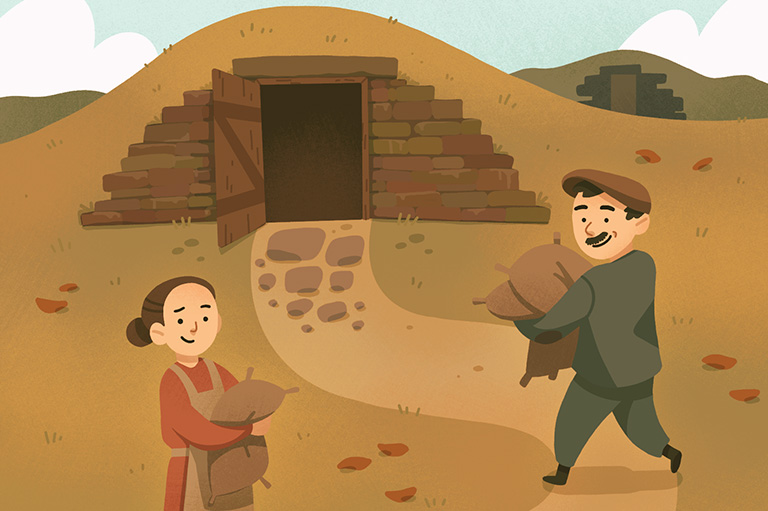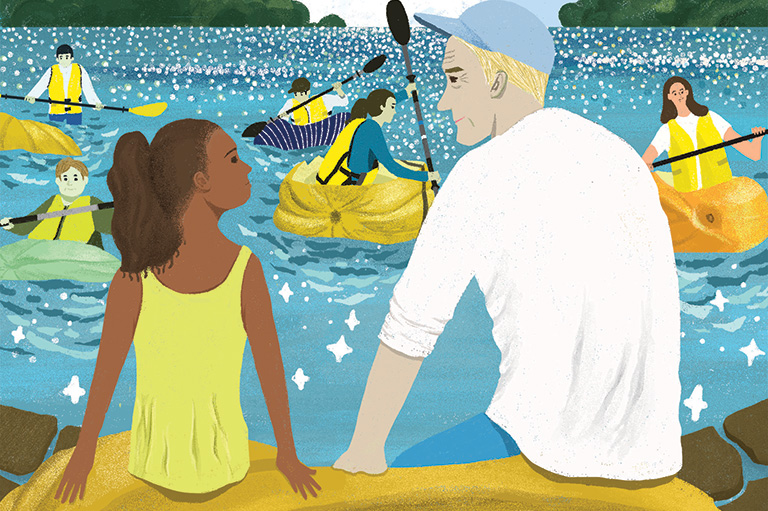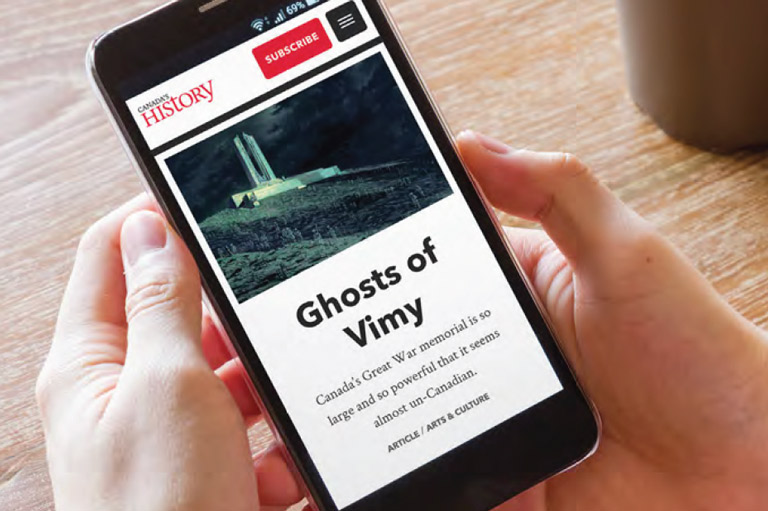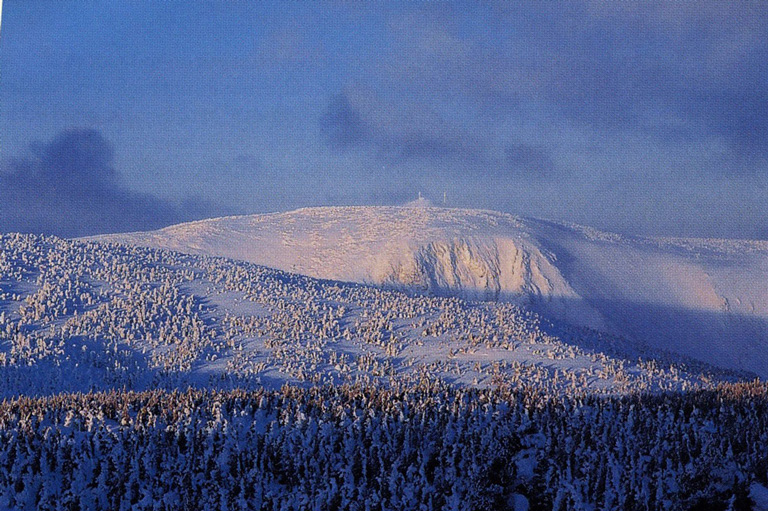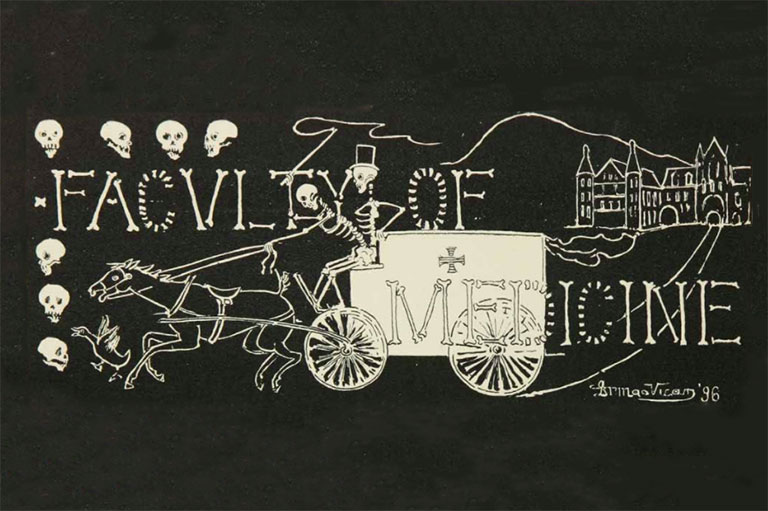Health on Earth
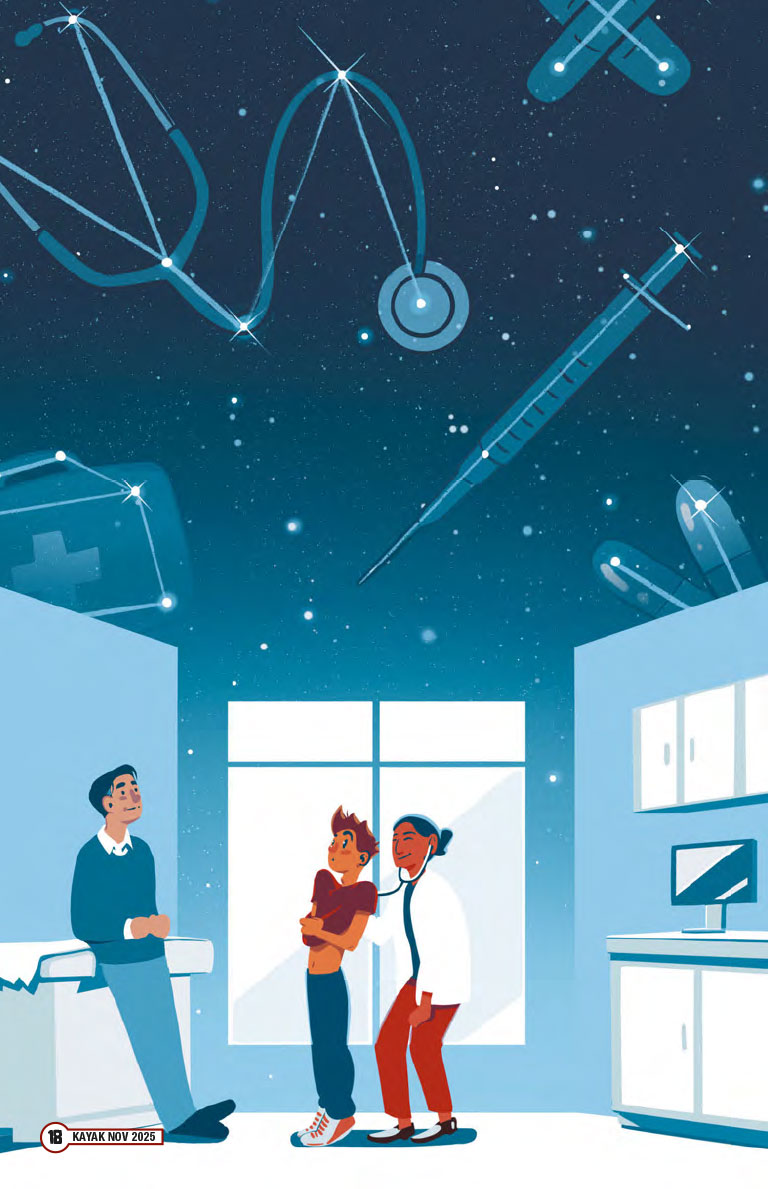
Near Tsiigehtchic, Northwest Territories, Nov. 8, 2035
“This might be a little chilly,” Dr. Khan said apologetically as she pressed her stethoscope to her young patient’s bare back.
Noah yelped. “Do you keep that thing in the fridge or what?”
Dr. Khan kept moving the metal disc around Noah’s back. “Take a deep breath,” she said, listening carefully. “And another.”
She lowered the arms of the stethoscope from her ears. “I don’t know exactly what it is yet,” she said to Noah and his dad, “but we’re going to find out soon.” She snapped open a grey case and pulled out a sleek machine about the size of a medium pizza box.
“So now you’re giving him video games to play?” Noah’s dad joked.
Dr. Khan looked at the screen of her tablet. “No such luck.” She turned to Noah. “Hold out your finger. You’re going to feel a poke.”
Noah winced as the little needle pierced his skin, but it was over instantly. “Is that it?”
“Almost,” the doctor said with a smile. “This part’s easier. Just spit into this little container. And please don’t miss!”
“What’s all this for, anyway?” Noah’s dad asked.
“This little machine will help us figure out what’s going on in his lungs.” She turned to Noah. “Not that long ago, we’d have had to send you to Whitehorse or even all the way to Edmonton to get these tests done. Now I can collect the samples right here and get the results back later today.”
“Cool!” Noah said. “Although it would be pretty fun to go to Edmonton, too. That big mall sounds amazing!”
“Want to see something even more amazing?” Dr. Khan asked, holding up a black undershirt with silver dots here and there.
“Uh, it’s a shirt,” Noah said. “What’s the big deal?”
Dr. Khan smiled. “It’s not just a shirt. It’s a medical measurement and diagnostic device. We sometimes call it Double M Double D for short.”
Noah and his dad exchanged doubtful looks. “No, really!” the doctor laughed. “You wear it tonight and tomorrow. The whole time you have it on, the shirt will track a whole bunch of stu — your heart rate, your breathing, how well you’re sleeping.”
“I wear it to bed?” Noah asked in surprise.
“Definitely,” Dr. Khan said. “You’re pretty lucky, Noah. All this high tech medical stuff means we can get some answers right here, and then decide what’s best for you. And if I don’t know, we can bring an expert in on a video call to help.”
“I hate coughing and being out of breath all the time,” Noah said. “My jijuu says I should eat more berries.”
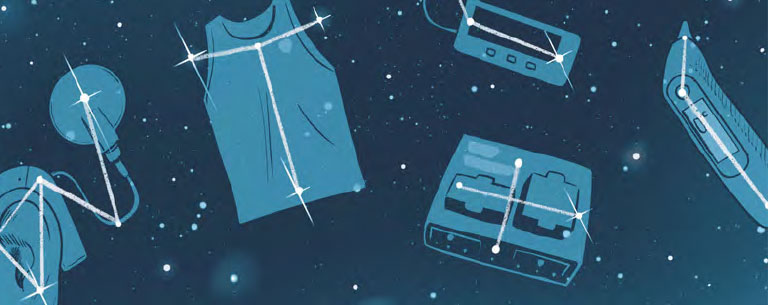
“That’s wise advice,” Dr. Khan said. “Grandmothers know best, and berries are good for everybody. We’ll see what else you need to help you breathe better and make your lungs stronger.”
“Where did these doodads even come from?” Noah’s dad was carefully turning the shirt over and peering inside it.
“Are you ready for this?” Dr. Khan asked. “Outer space!”
Seeing their faces, she quickly added, “For real. Canadian astronauts tried out the shirt and the tester while they were on missions. I went to a presentation about it at our remote medicine
conference. It’s super-interesting.”
Her face lit up as she explained.
“When they’re on the space station or headed to Mars, they can’t just drop everything and go
to a doctor’s office or a medical lab. They have to figure it out for themselves. It’s kind of like here
— you can’t exactly get these tests done down the street.”
“Because there are no streets,” Noah laughed. “Just gravel roads!”
Noah’s dad was nodding.
“And if these things work in space, they’ll work for a doctor who has to travel around to see
patients who live in tiny places like Tsiigehtchic.”
Dr. Khan nodded. “It’s pretty amazing. Down south they’re already connecting all these devices with artificial intelligence to find patterns doctors might miss.”
“Careful, doc. You don’t want the machines to replace you!” Noah’s dad said with a grin.
Noah jumped down from the examining table. “Let’s go, dad. I want to try out the Double MD
shirt or whatever it’s called.”
Dr. Khan opened the office door. “I’ll see you back here tomorrow afternoon,” she said. “Sleep tight. Don’t let the space bugs bite!”
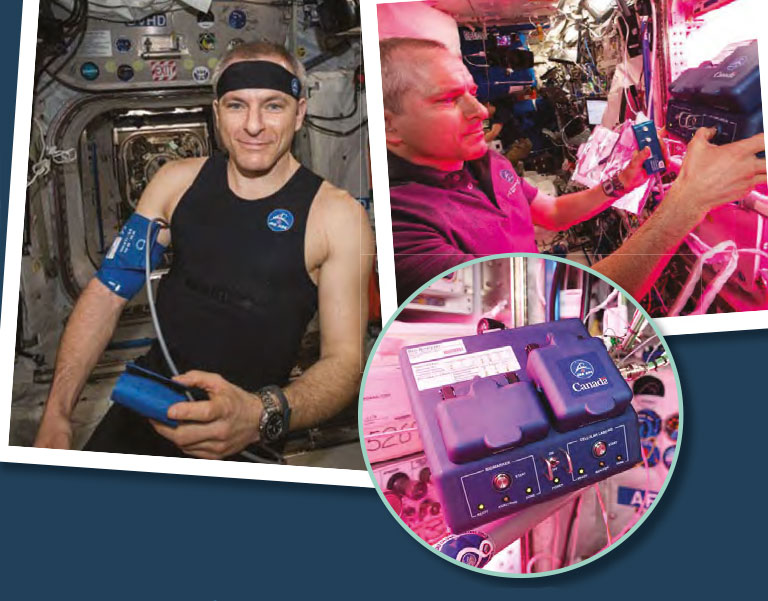
Think of this story as science fiction that’s getting closer to reality all the time. All the tech we mentioned is already in use in space, like the Bio-Monitor. The Canadian Space Agency is now looking to develop tech that will help astronauts monitor their health and handle medical issues while they are far from Earth. Many of the same advances can help people here in Canada who live a long way from a big city hospital.
Designed for space, the Connected Care Medical Module uses an artificial intelligence-based
computer system. (It’s known as C2M2; we made up the name Double M Double D.) These modules are already being tested with patients from Montreal to Whapmagoostui, Que, and in Sucker Creek, Alberta.
Another amazing tool that started in space is the neuroArm. It’s a robotic arm operated by remote control, using technology like what’s behind Canadarm2 and Dextre. Instead of moving cargo in space, though, for nearly 20 years it’s been helping surgeons perform incredibly precise operations
that would be impossible otherwise.
Astronauts on the International Space Station do all kinds of experiments, many of them related to human health. For instance, in space, people’s bones weaken much faster. By studying what happens and ways to slow down this bone loss, astronauts can help people on Earth with the same condition, osteoporosis. And thanks to satellite communication, medical specialists can meet with doctors and patients who live almost anywhere.
Themes associated with this article
Advertisement




